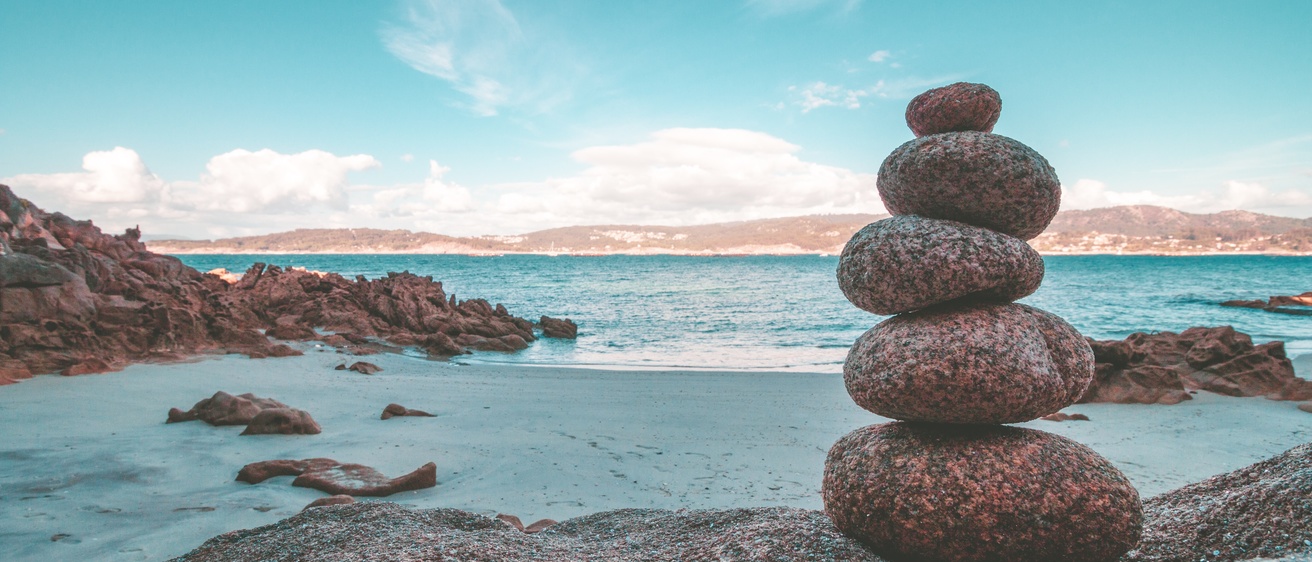When I received an email asking if I’d write an article on Mindfulness, my immediate reaction was, “What?! Are you kidding? There are a thousand people more qualified than me. I don’t have the time, talent, lingo, or credentials to do that. I’m going to say thank you, but no way." But then...
I took a deep breath. Then I took another one. One more. I felt the chair beneath me. The weight of my body. I noticed my heart was racing, my palms were sweaty, there was tightness in my belly, my ready-to-run feet were tingling. I took another deep breath. With curiosity, I focused on the physical sensations I was feeling and noticed by turning my attention to them, one by one they started to relax, soften, and dissolve.
“How interesting, it works every time.”
Mindfulness — paying attention on purpose — is everywhere these days. A variety of techniques are recommended to consciously observe thoughts, feelings and emotions, physical sensations, and the surrounding environment with curiosity and without judgement. We can be mindful when we are practicing seated meditation, preparing a meal, or walking the dog.
The activity of the mind is like a shaken snow globe — the snowflakes are the thoughts — swirling, randomly colliding, and constant. Mindfulness is putting that snow globe down and allowing more space between the thoughts, less activity, and, eventually, stillness.
With the relentlessness of the last 18 months, this is a vital skill. Navigating the uncertainties of a global pandemic, unemployment, racial injustice, and political dissatisfaction (are you noticing your heart starting to race?) have left us numb, angry, scared, and exhausted. One way to survive these mental gymnastics is through gentle mindful practices.
We learn through mindfulness to allow thoughts and feelings to come and go without attachment to the stories they tell. When we observe the fluidity of our thoughts, we come to accept that nothing in this world is permanent. We learn that we are not defined by our ever-changing emotions and that in each moment there is breath, ground, safety, and gratitude.
Mindfulness may seem like another “all about me” activity — my thoughts, physical sensations, deep breathing — but the beautiful thing about this practice is that the more willing we are to observe ourselves without judgement or comparison to others, the more space we have for others.
Meditation teacher and author Joseph Goldstein says, “When we practice self-awareness and come up against internal struggles, this can become the basis for developing a compassionate attitude and openness to the suffering of others.” By acknowledging how our bodies react to bias or injustice, we may be able to imagine walking in another’s experience and then act with empathy and patience.
If you are new to mindfulness practices, here are suggestions. And remember, you cannot do this wrong.
- Start simple. Meditation apps like Ten Percent Happier, Insight Timer, or UCLA Mindful are just some of the great options for guided mindfulness meditations, talks, and courses. Most of these apps are free and easy to navigate.
- Take your body out into nature. Observe colors, light, smells, shapes, and textures. Notice the ground beneath your feet, the air on your skin. Pay attention on purpose with all your senses.
- Take a class. Mindfulness classes are available through the University of Iowa and online.
- Slow down. Learn to listen to the wisdom of your body’s cues — when to eat, sleep, drink, move.
- When you’re feeling overwhelmed: practice R.A.I.N.
- R: Recognize difficult emotions or physical sensations when they come up.
- A: Allow. Don’t push emotions or physical sensations away. Let whatever is there be there.
- I: Investigate. Be curious about this inner experience.
- N: Name. Call it what it is without identifying with it. N also can stand for nurture: give yourself some grace.
And for those of us who can be overwhelmed by our own emotions, and/or for whom trauma exists in our backgrounds, remember, you get to be in charge of you and you can pace and stop this process anytime you need to. Dip your toe in, and step out, dip two toes in and then step out. Pace yourself, listen to yourself, and remember, you get to be in charge of you.
Additional resources:
- Read or listen to books by Jon Kabat-Zinn, anything by Brené Brown, Eric Copage, Angela Rose Black, or the work of Kristin Neff on self-compassion.
